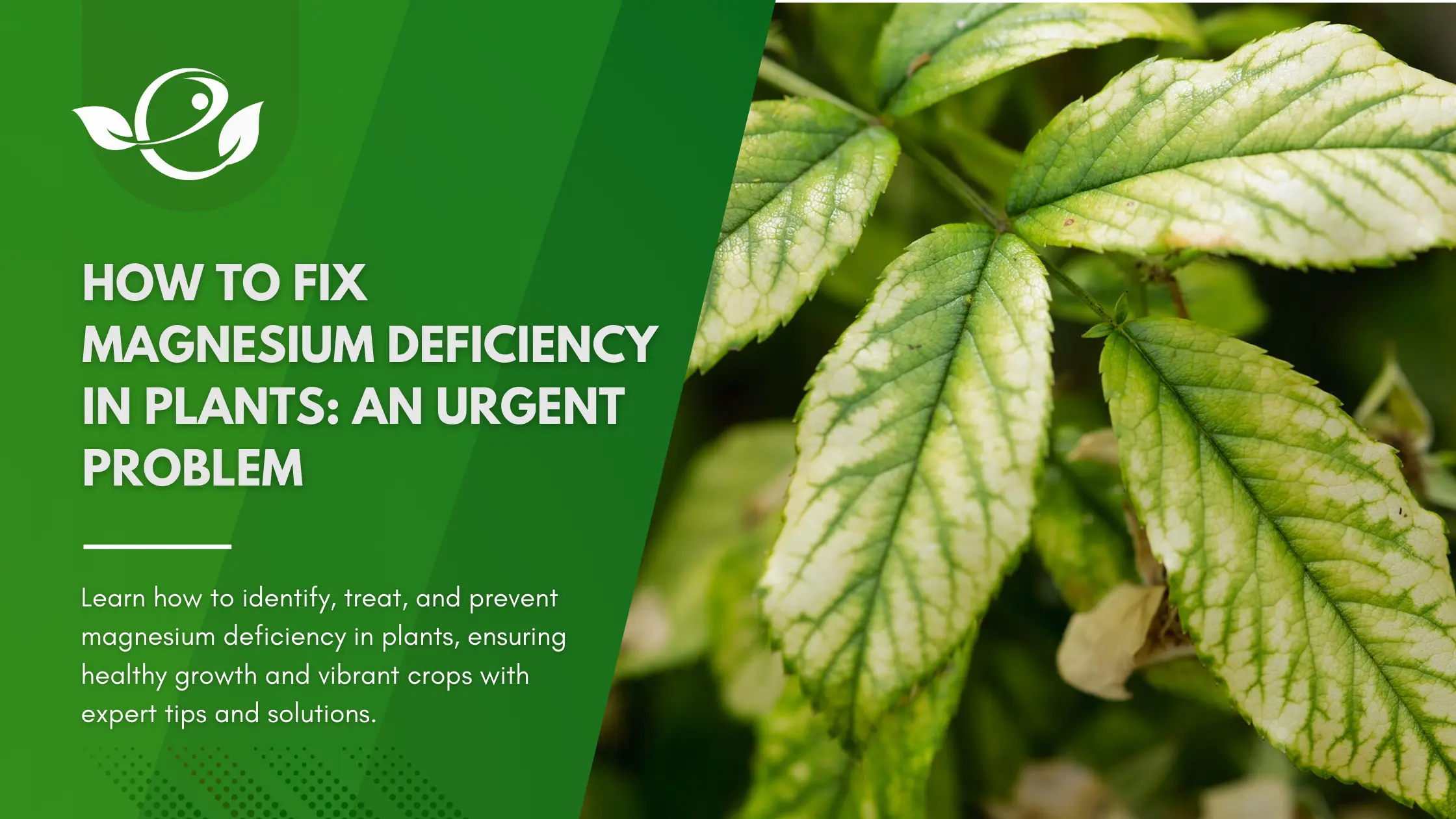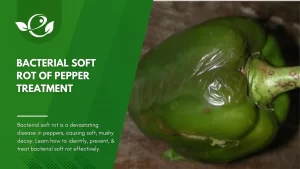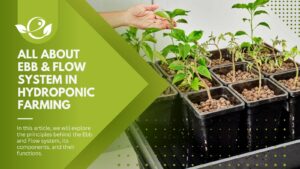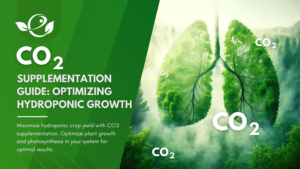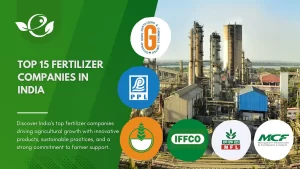Table of Contents
Magnesium is often the unsung hero in the garden. While nitrogen, phosphorus, and potassium often steal the limelight, magnesium quietly performs a crucial role in the background, supporting the very process that gives life to plants: photosynthesis. Without sufficient magnesium, plants struggle to produce the energy they need to grow, leading to a cascade of problems that can ultimately result in poor yield or even plant death. For many gardeners and farmers, magnesium deficiency can become a silent but serious issue that threatens the vitality of their crops. The good news is that, with the right knowledge, this problem is both identifiable and fixable.
As you walk through your garden or fields, you might notice some plants not looking as vibrant as they should. The leaves may appear yellow, the growth stunted, and the overall health seems diminished. These could be signs of magnesium deficiency—an often overlooked but increasingly common problem in both commercial and home gardening. The urgency of addressing this issue cannot be understated, as magnesium deficiency, if left untreated, can severely impact plant health and productivity.
This article aims to equip you with the knowledge to recognize, diagnose, and treat magnesium deficiency in plants, ensuring that your garden remains lush and your crops plentiful. We’ll delve into what magnesium deficiency looks like, why it happens, and most importantly, how to correct it effectively. By the end of this guide, you’ll be well-prepared to tackle this urgent problem head-on, ensuring your plants get the magnesium they need to thrive.
Understanding Magnesium Deficiency in Plants
What is Magnesium and Why is it Important for Plants?
Magnesium is a vital nutrient for plants, playing a central role in the process of photosynthesis. It is the central atom in the chlorophyll molecule, the pigment that gives plants their green color and enables them to absorb light energy from the sun. Without adequate magnesium, plants cannot effectively convert sunlight into the chemical energy they need to grow.
In addition to its role in photosynthesis, magnesium also plays a part in activating various enzyme systems involved in the synthesis of carbohydrates, proteins, and fats. It is essential for the movement of phosphorus within the plant and helps in the stabilization of cell membranes. Essentially, magnesium is to plants what the conductor is to an orchestra—it ensures that all parts work in harmony to produce healthy growth.
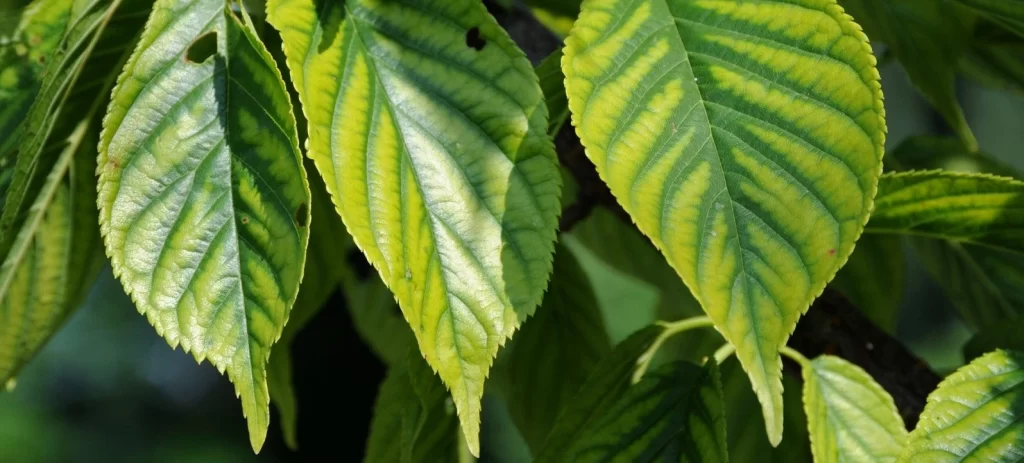
How Magnesium Deficiency Affects Plant Growth
When plants lack magnesium, the symptoms can be quite dramatic. The most noticeable effect is on photosynthesis, where a magnesium deficiency can severely limit a plant’s ability to produce chlorophyll. This leads to a reduction in the green color of the leaves, a condition known as chlorosis, which typically starts in the older leaves since magnesium is a mobile nutrient that the plant will redirect from older tissues to new growth.
Beyond chlorosis, magnesium deficiency can cause stunted growth, as the plant struggles to produce the energy needed for development. The weakened plants may also become more susceptible to pests and diseases, compounding the problem further. In crops, magnesium deficiency can lead to reduced yields and poorer quality produce, making it a serious concern for both commercial and home growers alike.
Identifying Symptoms of Magnesium Deficiency
- Magnesium-deficient plants generally develop a mottled pale green or chlorotic pattern in the interveinal tissue of older leaves, often starting near the margin.
- In cereal, leaves with mild deficiencies develop a green linear beading that progresses to interveinal chlorosis.
- In severe cases, the yellowing progresses to the middle of the leaf and the small veins also become affected.
- Reddish or brown spots appear on the leaf blade. Later on, the development of necrotic areas in the highly chlorotic tissue gives the leaves a rugged and deformed aspect.
- Finally, the yellowing engulfs the whole leaf, eventually leading to premature death and early shedding.
- Root growth is inhibited, resulting in poor plant vigor.



How Symptoms Vary by Plant Type
While interveinal chlorosis is a common symptom across many plants, the specific manifestation of magnesium deficiency can vary depending on the type of plant. For example:
- Vegetables: In crops like tomatoes, peppers, and beans, you might observe a distinct marbling pattern of yellow and green on the leaves.
- Fruit Trees: In citrus trees, magnesium deficiency often causes yellowing in a distinct “V” shape at the base of the leaves.
- Ornamentals: In roses and other flowering plants, yellowing may be accompanied by reduced flowering and smaller blooms.
Different plants may also exhibit symptoms at varying stages of deficiency. Some may show signs early on, while others may not display symptoms until the deficiency is severe. Understanding these variations can help in the accurate diagnosis of the problem.
Common Misdiagnoses
Magnesium deficiency is often confused with other nutrient deficiencies, particularly those of nitrogen, potassium, or iron. This is because the symptoms can be somewhat similar, with yellowing of leaves being a common sign in all these cases. However, there are subtle differences that can help in distinguishing magnesium deficiency:
- Nitrogen Deficiency: Generally causes a more uniform yellowing of the entire leaf, rather than the interveinal chlorosis seen with magnesium deficiency.
- Potassium Deficiency: Often causes yellowing and browning at the edges of the leaves rather than between the veins.
- Iron Deficiency: Typically affects the younger leaves first, whereas magnesium deficiency starts in the older leaves.
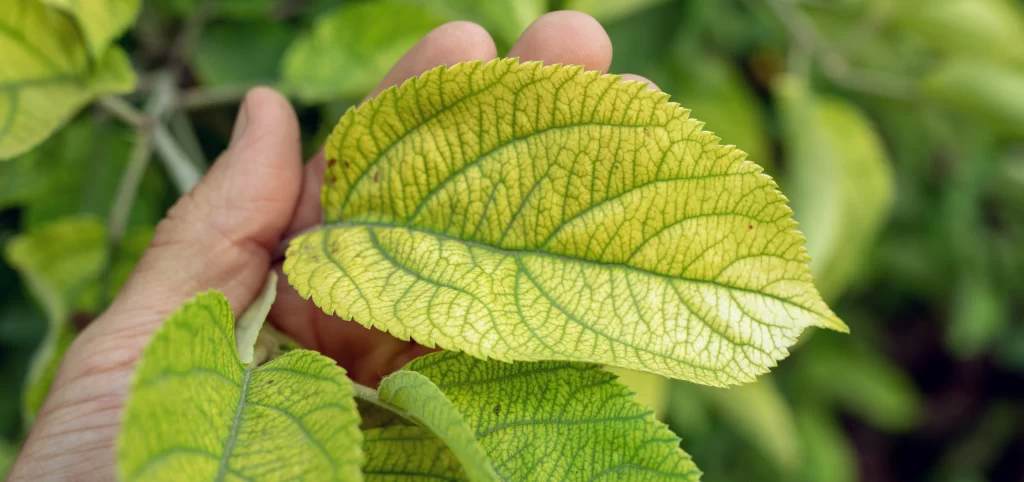


Correctly identifying magnesium deficiency is crucial because the treatment differs from other nutrient deficiencies. Applying the wrong remedy can exacerbate the problem or lead to other nutrient imbalances.
Diagnosing the Cause of Magnesium Deficiency
Soil Conditions
The primary cause of magnesium deficiency in plants is often related to the condition of the soil. Several factors can contribute to low magnesium availability:
- Acidic Soils: Soils with a low pH (acidic soils) tend to have lower levels of available magnesium. In highly acidic soils, magnesium can become less soluble and therefore less available to plants. This is particularly common in areas with heavy rainfall, where acidic conditions can develop due to leaching.
- Low Cation Exchange Capacity (CEC): Soils with low CEC, such as sandy soils, have a reduced ability to retain nutrients, including magnesium. This makes these soils more prone to nutrient deficiencies.
- Excessive Potassium or Calcium: High levels of potassium or calcium in the soil can compete with magnesium for uptake by plant roots. This is a common issue in soils that have been heavily fertilized with potassium-rich fertilizers or lime.
Understanding your soil’s characteristics is key to diagnosing and correcting magnesium deficiency. Regular soil testing can provide valuable insights into the pH and nutrient composition of your soil, helping you to tailor your management practices accordingly.
Watering Practices
Water management is another critical factor in maintaining adequate magnesium levels in plants. Both overwatering and under-watering can contribute to magnesium deficiency:
- Overwatering: Excessive watering can cause magnesium to leach out of the soil, particularly in sandy soils or those with low CEC. When magnesium is leached away, it is no longer available to plant roots, leading to deficiency.
- Hard Water: In areas with hard water (water with high calcium and magnesium content), the high levels of calcium can compete with magnesium uptake in plants. Although the water contains magnesium, the presence of excess calcium can inhibit its absorption by plants.
To mitigate these issues, it’s important to adjust your watering practices based on the specific needs of your soil and plants. Ensuring proper drainage and avoiding overwatering can help prevent the leaching of magnesium and other essential nutrients.
Plant and Soil Testing
Diagnosing magnesium deficiency with precision often requires more than just visual inspection. Soil and plant tissue testing can provide definitive answers:
- Soil Testing: A soil test will reveal the pH and nutrient levels, including magnesium. If the soil test shows low magnesium levels or a pH that is too low (acidic), it confirms the need for magnesium supplementation or pH adjustment.
- Plant Tissue Testing: Plant tissue analysis involves testing the leaves for nutrient content. This can confirm whether the symptoms you’re seeing are due to magnesium deficiency or another issue. It’s particularly useful in cases where visual symptoms are inconclusive.
Regular testing can help you stay ahead of nutrient deficiencies, allowing you to take corrective action before symptoms become severe.
Implementing Solutions to Fix Magnesium Deficiency
1. Soil Amendments
Once magnesium deficiency has been diagnosed, the next step is to correct the problem through appropriate soil amendments.
Epsom Salts (Magnesium Sulfate): Epsom salts are a popular and effective remedy for magnesium deficiency. They are highly soluble in water, making them a quick-acting solution. Here’s how to use them:
- Application Method: Dissolve 1-2 tablespoons of Epsom salts in a gallon of water. Apply this solution to the soil around the base of the plant or use it as a foliar spray for faster absorption.
- Dosage: The amount of Epsom salts needed can vary depending on the severity of the deficiency and the type of plant. For most garden plants, 1 tablespoon per gallon of water applied every two weeks is sufficient. For larger plants or trees, you may need to increase the amount proportionally.
- Timing: Apply during the growing season when plants are actively taking up nutrients. Early morning or late evening is ideal for foliar applications to avoid leaf burn.
Dolomitic Lime: For a more long-term solution, especially in acidic soils, dolomitic lime can be used to both raise the soil pH and add magnesium.
- Application Method: Spread lime evenly over the soil surface and incorporate it into the top few inches of soil. This is best done before planting, as lime takes time to break down and alter the soil pH.
- Dosage: The amount of dolomitic lime needed depends on your soil’s current pH and magnesium levels. Typically, 5-10 pounds of lime per 100 square feet is recommended for most garden soils, but it’s best to base the application on soil test results.
- Timing: Lime should be applied several months before planting to give it time to adjust the soil pH. Fall is a good time for application, as winter weather helps to break down the lime and integrate it into the soil.
Organic Matter: Incorporating organic matter into the soil can improve its structure, water-holding capacity, and nutrient availability, including magnesium.
- Compost: Adding well-decomposed compost to your soil improves its overall fertility and helps retain nutrients like magnesium. Compost is especially beneficial in sandy soils that are prone to nutrient leaching.
- Organic Mulches: Applying organic mulch, such as straw, leaves, or grass clippings, helps maintain soil moisture and gradually releases nutrients as it decomposes. This slow release of nutrients can help maintain magnesium levels over time.
Using organic matter as a soil amendment provides a sustainable approach to improving soil health and preventing nutrient deficiencies.
Fertilizer Choices: Choosing the right fertilizer is crucial for correcting magnesium deficiency without disrupting the balance of other nutrients.
Magnesium-Rich Fertilizers
Fertilizers specifically formulated to provide magnesium can be an effective way to address a deficiency.
- Magnesium Sulfate (Epsom Salts): As previously mentioned, this is a quick solution for providing magnesium. It can be mixed with other fertilizers or used alone.
- Magnesium Oxide: This is another form of magnesium that is slower to dissolve but provides a longer-lasting supply of magnesium to the soil.
- Magnesium-Containing Compound Fertilizers: Some compound fertilizers include magnesium along with other essential nutrients. Look for fertilizers labeled as “complete” or “balanced” that include magnesium, such as 5-10-10 or 10-10-10 formulations with added magnesium.
Balanced Fertilization: Ensuring that your plants receive a balanced diet of nutrients is key to preventing deficiencies. Over-fertilization with potassium or calcium can lead to magnesium deficiencies, so it’s important to use fertilizers that provide all necessary nutrients in appropriate amounts.
- Slow-Release Fertilizers: These fertilizers release nutrients gradually, providing a steady supply of magnesium and other essential nutrients over time. They reduce the risk of nutrient leaching and help maintain consistent magnesium levels in the soil.
- Custom Blends: If your soil test results show specific nutrient needs, consider using a custom blend of fertilizers that meet those requirements, including the right amount of magnesium.
2. Foliar Sprays
Foliar sprays offer a fast-acting solution for magnesium deficiency, delivering nutrients directly to the leaves where they are quickly absorbed.
- Preparation: To make a foliar spray, dissolve 1-2 tablespoons of Epsom salts in a gallon of water. Pour the solution into a spray bottle or garden sprayer.
- Application: Spray the solution evenly on the leaves of the affected plants, ensuring good coverage on both the upper and lower leaf surfaces. Foliar sprays are best applied in the early morning or late evening to avoid sunburn on the leaves.
- Frequency: Apply foliar sprays every two weeks until the deficiency symptoms disappear. For ongoing maintenance, you can reduce the frequency to once a month.
Foliar sprays are particularly useful for plants showing severe symptoms or for those that need a quick nutrient boost during critical growth stages.
3. Adjusting Watering Practices
Watering practices play a significant role in preventing and correcting magnesium deficiency. Proper watering helps maintain nutrient balance and prevents leaching.
- Avoid Overwatering: Overwatering can lead to magnesium leaching, especially in sandy soils. Ensure that your plants receive adequate but not excessive water. Check soil moisture levels regularly and water deeply but less frequently to encourage deep root growth.
- Improve Drainage: If your soil tends to hold too much water, improving drainage can help prevent nutrient leaching. Raised beds, adding organic matter, or amending the soil with sand or gravel can improve drainage.
- Use Rainwater or Softened Water: If you live in an area with hard water, consider using rainwater or water softened by reverse osmosis for your plants. This can reduce the competition between calcium and magnesium for uptake by plant roots.
Adjusting your watering practices to match the needs of your soil and plants can significantly reduce the risk of magnesium deficiency and other nutrient imbalances.
Preventing Magnesium Deficiency in the Future
Once you’ve corrected magnesium deficiency in your plants, the next step is to prevent it from recurring. Prevention strategies focus on maintaining balanced soil fertility and monitoring plant health regularly.
Soil Management Practices
Maintaining healthy soil is the foundation for preventing magnesium deficiency and other nutrient problems.
- Regular Soil Testing: Conduct soil tests every 2-3 years to monitor pH and nutrient levels, including magnesium. Regular testing allows you to detect potential deficiencies before they affect plant health.
- Adjusting Soil pH: Keep your soil pH within the optimal range for the plants you’re growing. For most garden plants, a pH of 6.0-7.0 is ideal. If your soil is too acidic, use lime to raise the pH, and if it’s too alkaline, consider adding sulfur or organic matter to lower the pH.
- Organic Matter Addition: Continuously improve soil structure and fertility by adding organic matter such as compost, manure, and cover crops. Organic matter not only supplies nutrients but also improves soil texture and water retention, making magnesium more available to plants.
- Crop Rotation and Cover Cropping: Implement crop rotation to prevent nutrient depletion and reduce the risk of disease. Cover cropping, especially with legumes, can help improve soil fertility and structure, making nutrients like magnesium more accessible to subsequent crops.
Soil management practices are long-term strategies that contribute to the overall health and productivity of your garden or farm, reducing the likelihood of nutrient deficiencies.
Balanced Fertilization
A well-balanced fertilization regimen ensures that your plants receive all the nutrients they need without creating imbalances.
- Follow Soil Test Recommendations: Base your fertilization practices on soil test results, applying fertilizers only as needed to correct deficiencies or maintain nutrient balance.
- Use Slow-Release Fertilizers: Slow-release fertilizers provide a steady supply of nutrients, including magnesium, over time. This helps prevent spikes and dips in nutrient availability that can lead to deficiencies.
- Avoid Over-Fertilization: Overuse of fertilizers, particularly those high in potassium or calcium, can lead to magnesium deficiency. Follow recommended application rates and consider the nutrient content of your soil when choosing fertilizers.
Balanced fertilization practices help maintain soil health and ensure that your plants have access to the nutrients they need for optimal growth.
Regular Monitoring
Consistent monitoring of your plants and soil is key to preventing magnesium deficiency and other nutrient problems.
- Visual Inspections: Regularly inspect your plants for signs of nutrient deficiencies, such as yellowing leaves or stunted growth. Early detection allows you to take corrective action before the deficiency becomes severe.
- Plant Tissue Testing: In addition to soil testing, consider periodic plant tissue testing, especially during critical growth stages. This can help you identify and address nutrient imbalances before they affect yield or plant health.
- Record-Keeping: Keep detailed records of soil test results, fertilization practices, and any nutrient deficiencies you’ve encountered. This information can guide your future soil and plant management decisions, helping to prevent repeat issues.
By staying vigilant and proactive, you can catch magnesium deficiency early and take steps to prevent it from affecting your garden or crops.

Conclusion
Magnesium deficiency is a critical issue that can severely impact plant health, growth, and productivity. However, with the right knowledge and tools, it is a manageable problem. Understanding the role of magnesium in plants, recognizing the symptoms of deficiency, and accurately diagnosing the cause are the first steps in addressing this urgent problem.
By implementing soil amendments, choosing the right fertilizers, adjusting watering practices, and adopting long-term soil management strategies, you can effectively correct magnesium deficiency and prevent it from recurring in the future. Regular monitoring and balanced fertilization will help ensure that your plants receive the nutrients they need to thrive.
In conclusion, while magnesium deficiency is a serious issue, it is also one that can be easily corrected with the right approach. By taking proactive steps to manage your soil and monitor plant health, you can ensure that your plants remain vibrant, healthy, and productive.
